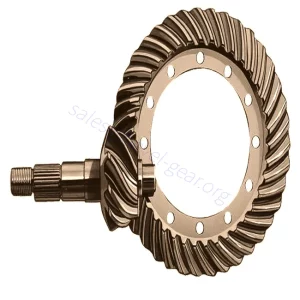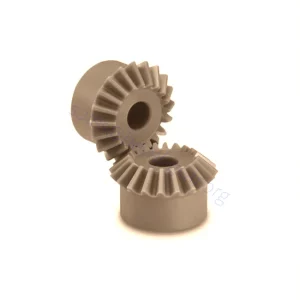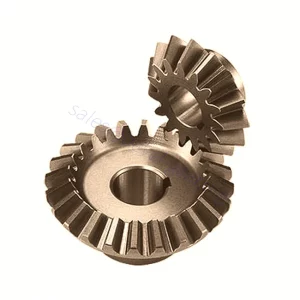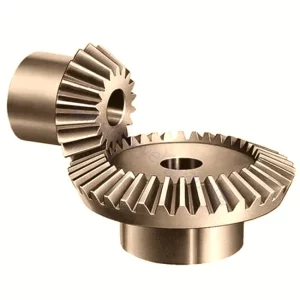Bevel Gears
China Factory Best Cheap Hypoid Bevel Gear
Bevel gears are typically constructed from metal or plastic. Bevel gears can be made of various types of materials with differing properties, such as aluminum, bronze, cast iron, brass, steel, hardened steel, and stainless steel. Plastic materials used to make bevel gears include Delrin, nylon, and polycarbonate.The bevel gear has many different applications such as marine applications, locomotives, printing presses, automobiles, cooling towers, steel plants, power plants, railway track inspection machines, etc.
As one of the leading bevel gear manufacturers, suppliers, and exporters of mechanical products, We offer bevel gear and many other products.Please get in touch with us for details.
Mail:[email protected]
This is a particular type of bevel gear where the axes of the shafts are not intersecting or parallel. The distance between the two gear axes is called the offset. The teeth of hypoid bevel gears are helical, similar to spiral bevel gears. A hypoid bevel gear designed with no offset is simply a spiral bevel gear. The manufacture and shaping of hypoid types are similar to spiral bevel gears.
The ratio of the number of teeth of the gears is not directly proportional to the percentage of their pitch diameter or the theoretical operating diameter of the gear. Because of the offset, the spiral angle of the smaller gear (pinion) of a hypoid bevel gear set can be more significant than the spiral diameter of the larger gear. This makes it possible to match larger pinions to a particular size of a driven gear, making the pinion stronger and having a higher contact ratio to the larger gear. It allows hypoid gears to transmit more torque and operate at higher gear ratios. Also, bearings on both sides of the gears can be placed with enough offset since their shafts are not intersecting. The trade-off, however, is the decrease in efficiency as the compensation is being increased. Hypoid gears operate smoother with minimal vibration than spiral gears. The downside of using spiral gears, aside from the efficiency issue mentioned earlier, is the high sliding across the face of the teeth. This means special lubricating oils must be used.
Comparison of spiral bevel gears to hypoid gears
Hypoid gears are more robust, operate more quietly, and can be used for higher reduction ratios. However, they also have some sliding action along with the teeth, reducing mechanical efficiency. The energy losses are in the form of heat produced in the gear surfaces and the lubricating fluid.
Hypoid gears are typically used in rear-drive automobile drivetrains.
A higher hypoid offset allows the gear to transmit higher torque. However, increasing the hypoid compensation reduces mechanical efficiency and a consequent decrease in fuel economy. It is often impossible to replace low-efficiency hypoid gears with more efficient spiral bevel gears in automotive use because the helical bevel gear would need a much larger diameter to transmit the same torque. Increasing the size of the drive axle gear would require an increase in the size of the gear housing and a reduction in the ground clearance, interior space, and an increase in weight.
The hypoid gear is also commonly used in some railcar transmissions with diesel power units – where the engine and gearbox are similar to those used in traditional trucks and busses (not diesel/electric hybrid type drive). The transmission allows the input shaft to rotate in one specific direction (either clockwise or anti-clockwise) while allowing the output shafts to change their rotational movement, thus allowing a vehicle to drive in either direction continuously.
Another advantage of hypoid gear is that the ring gear of the differential and the input pinion gear are both hypoid. In most passenger cars, this allows the pinion to be offset to the bottom of the crown wheel. This allows for more extended tooth contact and lowers the shaft that drives the pinion, reducing the “hump” intrusion in the passenger compartment floor. However, the greater the displacement of the input shaft axis from the crown wheel axis, the lower the mechanical efficiency.




